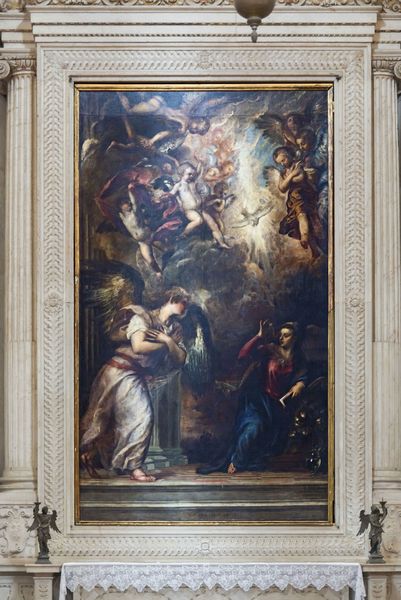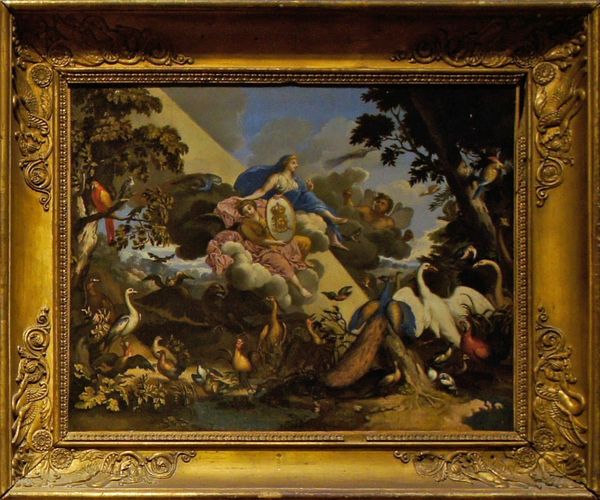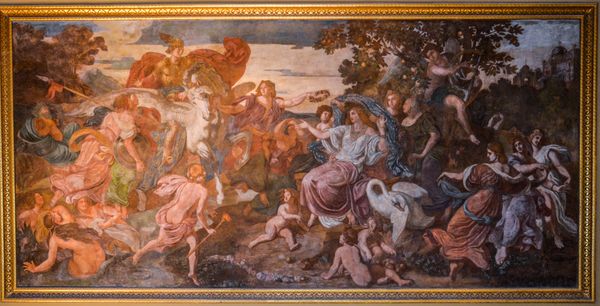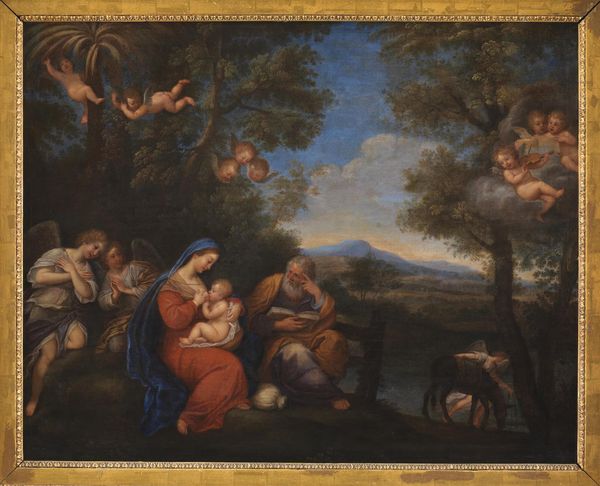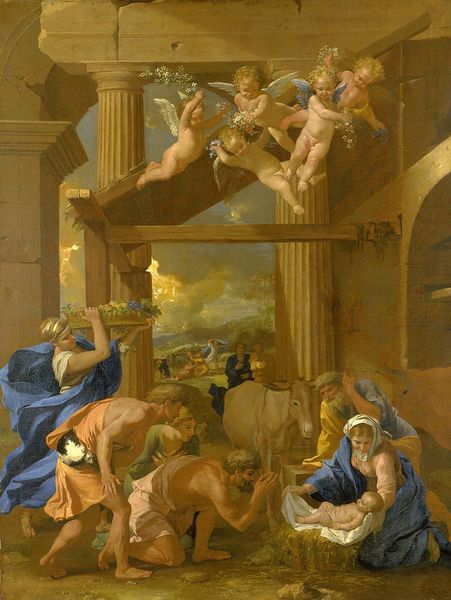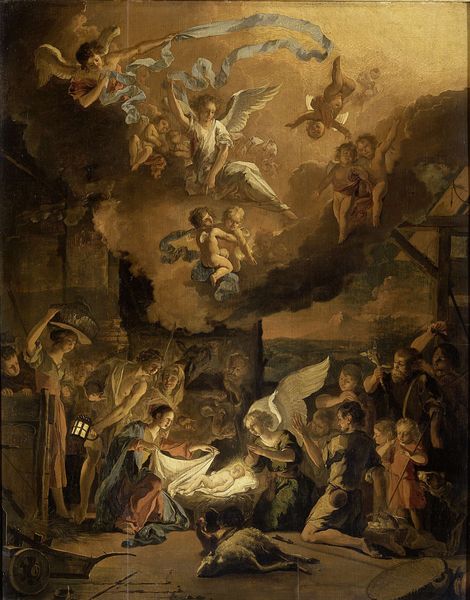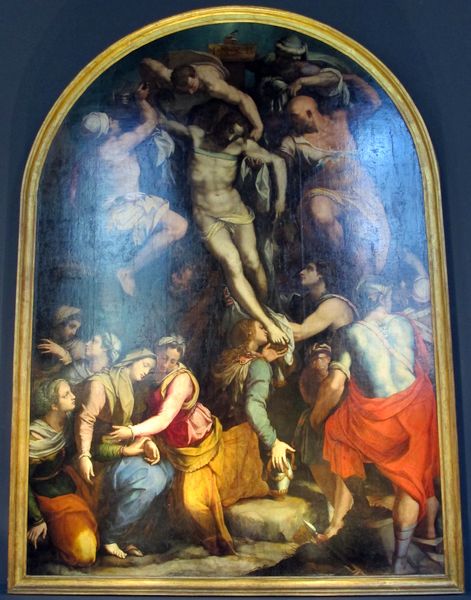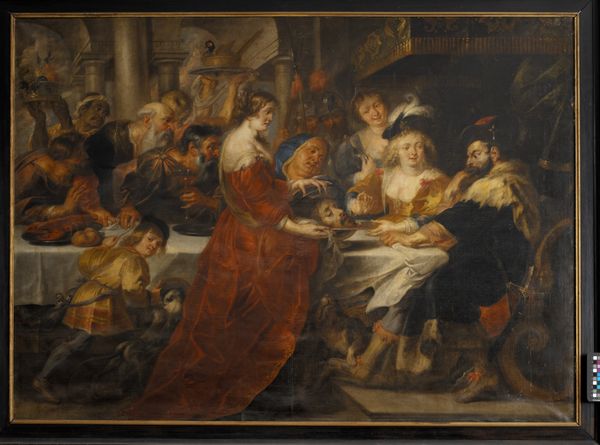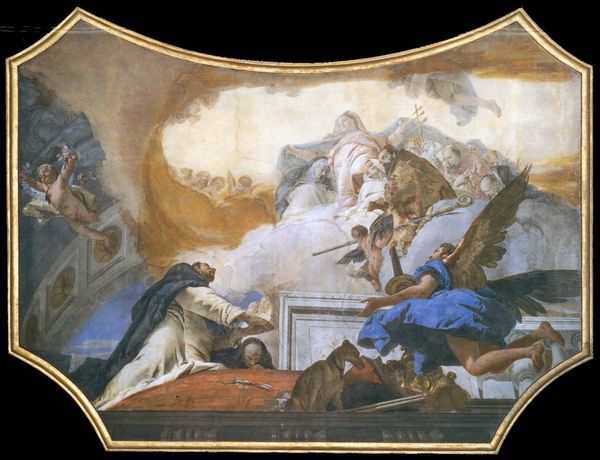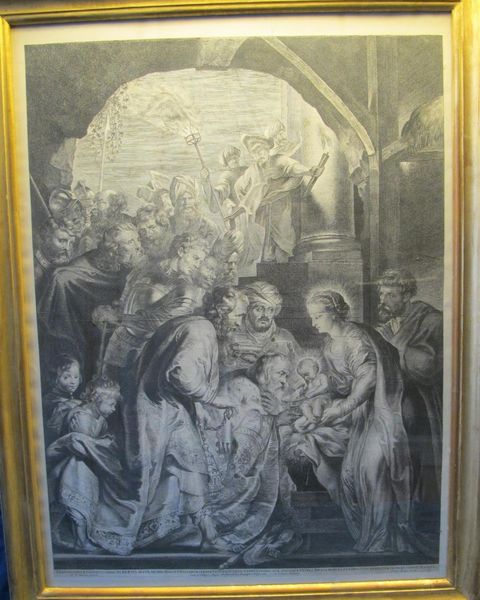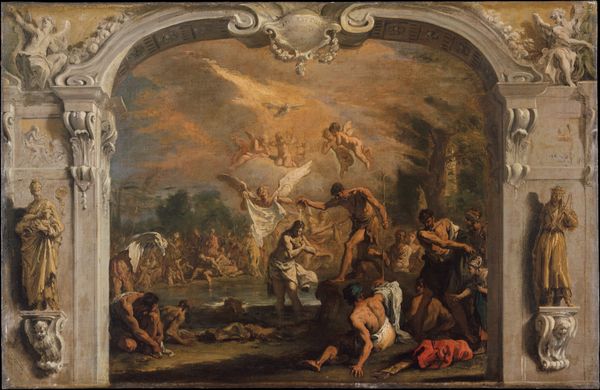
painting, oil-paint
#
allegory
#
narrative-art
#
baroque
#
painting
#
oil-paint
#
figuration
#
oil painting
#
history-painting
Copyright: Public domain
Editor: Here we have Charles Le Brun’s "Adorazione dei pastori," from 1688, rendered in oil paint. It's such a vibrant, bustling scene, full of figures. What strikes me is how the heavenly and the earthly seem to converge. How do you interpret this work, especially within its historical context? Curator: Considering the era and Le Brun's position, this work speaks volumes about power dynamics and religious ideology. The Baroque period emphasized grandeur and emotional impact, which are certainly on display. But let's think about what this scene is actually portraying. It’s an idealized, perhaps even sanitized, version of the Nativity, intended for a specific aristocratic audience. Who is conspicuously absent or marginalized in this representation? Editor: I see what you mean. The shepherds, though present, seem almost like extras in a grand play, and it definitely feels like Mary is idealized. It's less about their lived experiences and more about the symbolic weight of the event, viewed through a privileged lens. Curator: Precisely! Le Brun, as a court painter, was essentially crafting propaganda, reinforcing the established order. Consider the function of light in the image – divine light illuminates the Holy Family, reinforcing their central importance. But whose light are we not seeing? Whose stories remain in the shadows? Editor: So it's not just about the biblical narrative, but also about the narrative *being told* through the painting? The elite gaze shapes the representation, overshadowing other perspectives. Curator: Exactly! Art never exists in a vacuum. Examining whose voices are amplified, and whose are silenced, unveils so much about the values and power structures of the time. It prompts critical reflection. Editor: This makes me rethink how I approach historical art. It's not just about aesthetic appreciation; it’s also about critically analyzing the socio-political narratives embedded within. Thank you. Curator: My pleasure. This perspective enhances our appreciation and helps reveal complexities and historical truths about both the art and our interpretations.
Comments
No comments
Be the first to comment and join the conversation on the ultimate creative platform.

